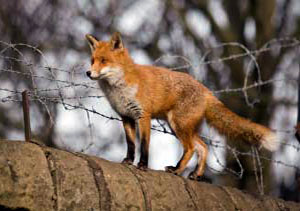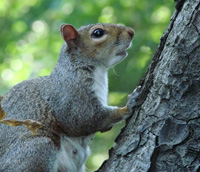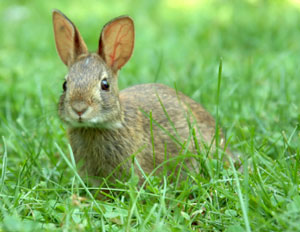Roadkill : rabbits, hedgehogs, foxes……

In this country, like others dependent on the internal combustion engine, many animals are killed or wounded on our roads. One of the first people to comment on the significance of roadkill was the American naturalist Joseph Grinnell; he estimated the mortality count in California (back in 1920 !!) ran into the hundreds if not thousands of animals every day.
Here in the U.K. statistics collected by the PTES (People’s Trust for Endangered Species) indicate that rabbits are the animal most commonly killed on the roads, followed by the hedgehog. Their statistics are important as they are one way of monitoring the status of the country’s animal populations. The PTES has expressed concern about the state of the hedgehog population – as the percentage of hedgehogs in the roadkill has dropped. This probably means that the overall hedgehog population has fallen. Compared to 2001, the percentage of hedgehogs in roadkill has declined by 7.5%.
Their statistics are important as they are one way of monitoring the status of the country’s animal populations. The PTES has expressed concern about the state of the hedgehog population – as the percentage of hedgehogs in the roadkill has dropped. This probably means that the overall hedgehog population has fallen. Compared to 2001, the percentage of hedgehogs in roadkill has declined by 7.5%.
The ‘pecking order’ for roadkill (in the UK) is
- Rabbit
- Hedgehog
- Grey squirrel
- Fox
- Badgers
Whereas in the United States (figures for New England) the order is 
- Squirrels
- Cats
- Rats
- Opossums
- Raccoons
The PTES survey started in 2001 and is dependent on ‘volunteers’ recording sightings of roadkill and other information. It runs for 3 months each year – July, August and September. Details of the survey can be obtained here; their survey pack includes a useful mammal identification guide. For the technologically enthusiastic, it is said that the survey this year may also appear as a mobile phone ‘app’.
 The number of rabbits in roadkill indicates that the population in some parts of the UK is quite significant. Whilst rabbits are responsible for economic losses in farming and forestry, they also have a role in helping to maintain chalk grassland in some areas through their grazing activities (and help support population of other wildlife species such as stoats and foxes).
The number of rabbits in roadkill indicates that the population in some parts of the UK is quite significant. Whilst rabbits are responsible for economic losses in farming and forestry, they also have a role in helping to maintain chalk grassland in some areas through their grazing activities (and help support population of other wildlife species such as stoats and foxes).
Populations of any animal can fluctuate widely and quickly, especially in the face of epidemic disease. The rabbit population of the UK fell by over 90% when exposed to the myxomatosis virus in the 1950’s; now rabbit haemorrhagic disease (RHD) may prove to be a significant threat.
A number of books have focused on the issue of roadkill, for example, ‘Flattened Fauna’ by Knutson is available from a variety of sources, for example : here. Facebook and Flickr also feature pages / groups that deal with roadkill. Roadkill is also referred to as ‘flat meats’ by some and there are a number of websites devoted to the cooking of animals killed on the roads / by vehicles.
Comments are closed for this post.
Discussion
[…] Roadkill stats: http://www.woodlands.co.uk/blog/practical-guides/roadkill-rabbits-hedgehogs-foxes/ […]
See The Times 10/9/2011 article on Barn Owls – their habit of low flying along country lanes (near to hedges / hedgerows) means that they are often victims of traffic.
http://www.hawkandowl.org/
http://operationsword.blogspot.com/
Pigeon, pheasant and rabbit seem the most common and the most unusual find was a coot. I have also seen a lot of fox lately on the A27 between Havant and Chichester there must be half a dozen fox carcass at any given time on a 10 mile stretch of dual carriage way.
I’ve eaten a good bit of roadkill too. Pigeon, rabbit, squirrel, pheasant and coot all found there way from the road to the pot.
Yes – I agree that one would expect a difference but have not ‘turned up’ any data; by the same logic, one might expect certain regional differences – as some comments above suggest.
regards
Chris
@Chris, I wonder what the urban/rural mix of the roadkill is? I would imagine that the squirrels are rare in the country but more frequent in urban areas, given the sheer volume of urban traffic and the numbers in parks, etc.
I see a lot of dead pheasant near me, deer and rabbit are also common. I guess the saddest thing Ive seen is a baby lamb! but that was in New Zealand!
In Tasmania they have the very wonderful Tasmanian Road Kill Orchestra, a band that plays only on home-made instruments made from the remains of dead animals.
Unsurprisingly the band is drum-heavy….. http://www.abc.net.au/arts/adlib/stories/s881866.htm
On a more sombre note I have heard it said – by a vet – that many dead badgers found on the roads have not died there …. draw your own conclusions.
hi round cheshire it seems rabbits and badgers are main deaths. I counted 5 badgers on a 12 mile drive to work one morning
I drive around Scotland and see quite a lot of Deer but also Badger these days which I had not noted before.
Tom
for armadillo roadkill – see
http://www.flickr.com/photos/jandksmith/50802193/ or
http://www.aaanimalcontrol.com/blog/roadkilledarmadillo.htm
apparently common in Florida
Chris – yes : may seem strange but see (for example) http://www.timesonline.co.uk/tol/news/environment/article4009026.ece
Squirrels do seem to be relatively common victims.
Though recently, the most ‘common’ roadkill that I have seen is fox …..
Around the lanes of West Sussex, pheasants have a high mortality on the roads. I have picked up quite a few over the years. Unless they are in pretty good shape, I just cut out the breast meat and it ends up in a curry.
That suprises me.. as someone who pickes up injured animals on the road… squirrels are fairly rare… rabbits i understand,..next from my experience would be deer, foxes yes and hedgehogs…`squirrels` hmmm suprised. i oonce counted 170 roadkills on a 17 mile bike ride normal A road.
(I’ve heard that Armadillos are another relatively common victim)
What’s the most unusual animal anyone’s seen dead on the side of the road?!?

Hi, I saw a roadkill in urban Leeds today (at Harehills near the city centre). Could not decide exactly what the animal was.
Not rabbit, fox or squirrel.
Not a rat (no long tail).
?? It looked like mink/ coypu?? Which did not seem at all likely.
Any ideas?
Carolyn Fraser
18 November, 2015